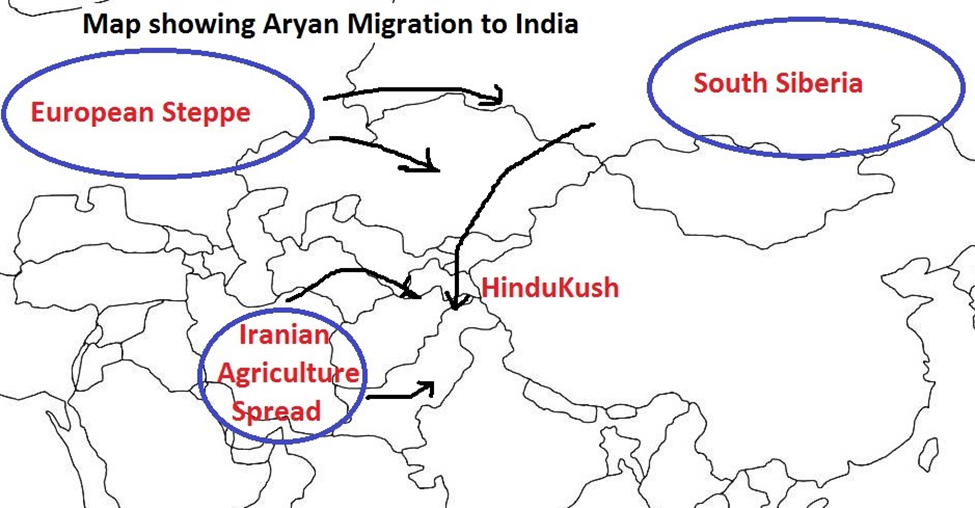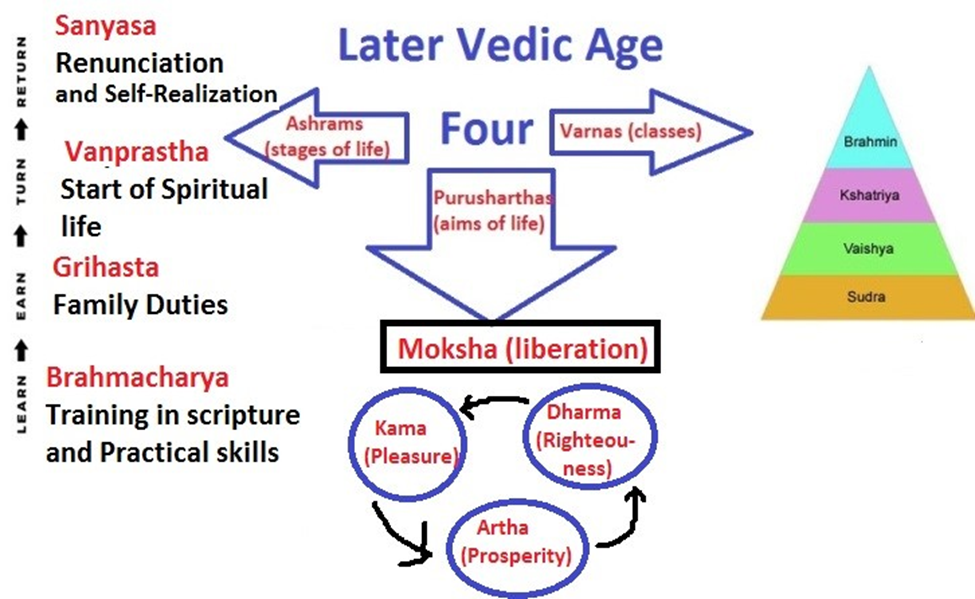i. Introduction
The Vedic Age: An Overview
After exploring the Indus Valley Civilization, we will now delve into the Vedic Period. While not as important as the previous topic from the UPSC's perspective, it is still a significant period in Indian history. Our approach here will be to provide a general understanding of the Vedic Age, with a focus on key terms and concepts. To make it more engaging, we will use diagrams, maps, and tables wherever possible.
What is the Vedic Age?
The period between 1500 to 600 BCE is referred to as the Vedic Age. It is based on the primary source of the Vedic texts, composed by the Indo-Aryans, who spoke the Indo-European language.
How did the Aryans come to India?
- There are different theories on the arrival of Aryans in India, such as:
- The Aryan Migration Theory suggests that the Indo-Aryans migrated to India from Central Asia and Eastern Europe.
- The Indigenous Theory suggests that the Aryans were already present in India and were not foreign invaders.
- The Hybrid Theory proposes that the Aryans were a mixture of indigenous people and migrants.
| Name of the Theory | The postulate of the Theory | Proposed or Supported by |
| Aryan Migration Theory | Indo-Aryans migrated in a series of immigration from different regions.
| It is the most accepted and dominant theory till now |
| Central Asian Theory | Aryans migrated from Central Asia and Eurasian Steppe
A recent study ‘The Genomic Formation of South and Central Asia’ (2018) of the Y chromosome support this view | Max Muller |
| European Theory | Europe is the homeland of Aryans Based on the comparative linguistic study of Greek, Latin, German, and Sanskrit e.g. Sanskrit words ‘Pitri’ and ‘Matri’ are similar to the Latin ‘Pater’ and ‘Mater’ | Sir William Jones (1786) |
| Indian Theory | Aryans were indigenous to the subcontinent.
DNA analysis of Women Skelton found at Rakhigarhi refutes the Aryan migration theory | Dr. Sampurnanand and A.C Das; Ganganath Jha and others |
| Arctic Region Theory | Northern Arctic is the homeland for Aryans as Vedas speak of 6 months of long days and long night | Bal Gangadhar Tilak |
| Tibet Theory | Tibet is the original home of Aryans | Swami Dayananda Saraswati |

For sake of Study, the Vedic Age has been divided into Rig Vedic (or Early Vedic Period between 1500 to 1000 BCE) and Later Vedic Period (1000-600 BCE)
ii. Geography of the Vedic Age
| Features | Early Vedic Period | Later Vedic Period |
| Location |
Saraswati (Ghaggar-Hakra Channel) was considered the holiest river |
Bengal) with the help of fire and Iron tools
Story of Videga Madhava (in Satapatha Brahmana): |
| Reference to Sea | No reference to Sea in Rig Veda (term ‘Samudra’ meant the collection of water and not sea) | Acquired knowledge of Eastern and Western Sea and also of Narmada and Vindhyan Mountains |

iii. Political Structure of Vedic Age
| Features | Early Vedic Period | Later Vedic Period |
| Form of Government |
Gramini (leader of a village) |
|
| Administrative units |
|
‘Rastra’ term appeared as wars were fought for territories now rather than cows |
| Tribal Assemblies |
Gana (Assembly or troop) |
|
iv. Society of Vedic Period
| Features | Early Vedic Period | Later Vedic Period |
| Division |
The occupation was not based on Birth |
|
| Varna System |
Rig Vedic people familiar with slavery |
Varna-ashrama-dharma society: Showed four stages of life (see image) |
| Social mobility | People could change their profession and absence of strict social hierarchy | Restricted social mobility |
| Position of Women |
They had the choice to choose their husband. No incidence of Sati, or Purdah |
|
| Marriage |
Niyoga marriage existed ( it was a variant of widow remarriage in which childless widow was temporarily married to the husband’s brother to produce children ) |
|

v. The economy of the Vedic Period
| Features | Early Vedic Period | Later Vedic Period |
| Economy |
| Agricultural economy: Agriculture has become the chief means of livelihood |
| Trade and Commerce |
Unite of currency was Nishka |
Shresthins (guild ) was the organization of merchants, |
| Revenue System |
Prestations: gift exchanged on group level was important for economy Rig Vedic society e.g. exchange of courtesies, weapon, cattle, etc. |
Vaishyas were the only tribute paying community in later |
| Crafts |
It had Ochre Coloured Pottery |
Later Vedic culture is also called PGW (Painted Grey ware)- |
| Agriculture |
Used wooden plough (Phala, langala and ‘sira’) |
Rice (Vrihi) and Wheat (Godhuma) was the staple diet |

vi. The religion of Vedic Period
vii. Important Terms used in Vedic Period
| Terms used in Rig Vedic age | Meaning | Terms | Sources |
| Godhuli | Time | Samsara ( transmigration of Soul) | Brahadarankya Upanishad |
| Gavyuti | Distance | Four ashrams | Jabala Upanishad |
| Gotra | Kinship | Satyamev Jayate | Mandukya Upanishad |
| Gana | Lineage | Fou-rfold Varna system | Rig Veda (10th Mandala) |
| Grama | Village | Trimurti God | Maitrayani Upanishad |
| Gauri | Buffalo | Origin of Universe | Rig Veda (10th Mandala) |
| Gojit | Winner of Cow or a Hero | Sabha and Samiti as twin daughters of Prajapati | Atharva Veda |
| Goghna | Guest fed on cattle |




